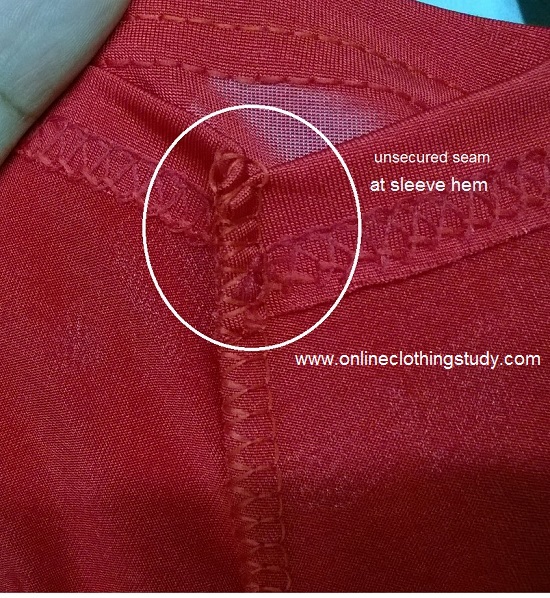Understanding Defective Garments: Causes, Impacts, And Solutions
Defective garments are a significant concern in the textile and apparel industry. They not only affect the financial health of manufacturers but also impact consumer satisfaction and brand reputation. In this article, we will explore the various aspects of defective garments, including their causes, consequences, and the strategies that can be employed to mitigate these issues.
The fashion industry is one of the largest sectors globally, with millions of garments produced daily. However, it is also plagued by defects that can arise during the manufacturing process, affecting everything from fabric quality to stitching. Understanding the complexities of defective garments is vital for stakeholders across the supply chain, including manufacturers, retailers, and consumers.
In this comprehensive guide, we will delve into the world of defective garments, providing insights into the types of defects, their causes, and how businesses can address these challenges. By understanding the factors that contribute to garment defects, companies can improve their quality control processes and enhance customer satisfaction.
Table of Contents
- What Are Defective Garments?
- Types of Defects in Garments
- Causes of Defective Garments
- Impact of Defective Garments on Businesses
- Impact of Defective Garments on Consumers
- Quality Control Measures
- Regulatory Compliance and Standards
- The Future of the Apparel Industry
What Are Defective Garments?
Defective garments refer to clothing items that have quality issues, which can range from minor cosmetic flaws to major functional problems. These defects can compromise the garment's usability, durability, or aesthetic appeal, leading to dissatisfaction among consumers.
Types of Defects in Garments
Understanding the types of defects that can occur in garments is crucial for effective quality control. Here are some common categories:
- Fabric Defects: Issues like discoloration, uneven texture, or holes in the fabric.
- Construction Defects: Problems with stitching, seams, or finishing that affect the garment's integrity.
- Design Defects: Flaws in the garment's design that may not align with consumer expectations.
- Measurement Defects: Incorrect sizing or fit that can lead to consumer dissatisfaction.
Causes of Defective Garments
Defects in garments can arise from various sources, and identifying these causes is essential for prevention. Common causes include:
- Poor Quality Materials: Using substandard fabrics can result in various defects.
- Inadequate Training: Lack of proper training for workers can lead to mistakes during production.
- Machine Malfunctions: Equipment failures can introduce flaws in the manufacturing process.
- Insufficient Quality Control: Lack of rigorous inspection processes can allow defective items to reach consumers.
Impact of Defective Garments on Businesses
The presence of defective garments can have serious repercussions for businesses. Here are some key impacts:
- Financial Losses: Defective garments can lead to returns and refunds, negatively affecting profit margins.
- Brand Reputation Damage: Consumers may lose trust in a brand associated with poor quality.
- Increased Production Costs: The need for rework or replacement can drive up costs.
Impact of Defective Garments on Consumers
Consumers are the final stakeholders affected by defective garments. Some impacts include:
- Loss of Satisfaction: Receiving a defective product can lead to disappointment and frustration.
- Safety Concerns: Some defects may pose safety risks, particularly in children's clothing.
- Inconvenience: The need to return or exchange defective items can be a hassle for consumers.
Quality Control Measures
To combat the issue of defective garments, businesses can implement several quality control measures:
- Regular Inspections: Conducting systematic inspections throughout the production process.
- Employee Training: Providing comprehensive training for workers to minimize errors.
- Material Testing: Ensuring that all materials meet quality standards before use.
- Feedback Mechanisms: Establishing channels for consumer feedback to address issues promptly.
Regulatory Compliance and Standards
Adhering to regulatory standards is crucial for garment manufacturers. Compliance with relevant quality and safety regulations can help mitigate the risks associated with defective garments. Organizations such as the American Society for Testing and Materials (ASTM) and the International Organization for Standardization (ISO) provide guidelines that can assist businesses in maintaining quality.
The Future of the Apparel Industry
As the apparel industry evolves, addressing the issue of defective garments will become increasingly important. Innovations in technology, such as automated quality control systems and AI-driven inspections, hold promise for improving garment quality. Furthermore, a growing consumer demand for sustainable and ethically produced clothing will push manufacturers to prioritize quality to maintain brand loyalty.
Conclusion
In conclusion, defective garments pose significant challenges for both businesses and consumers. Understanding the causes and impacts of these defects is essential for developing effective solutions. By implementing rigorous quality control measures and adhering to industry standards, businesses can reduce the incidence of defective products and enhance consumer satisfaction.
We invite you to share your thoughts on this topic in the comments below. If you found this article helpful, please share it with others or explore more articles on our site to expand your knowledge about the apparel industry.
Penutup
Thank you for reading! We hope this article has provided valuable insights into the world of defective garments. Stay tuned for more informative content, and we look forward to welcoming you back to our site soon.
María Hervás: A Rising Star In Film And Television
John Waite: The Journey Of A Rock Icon
Everything You Need To Know About Ginger Bars: A Sweet And Spicy Treat

